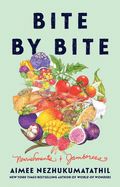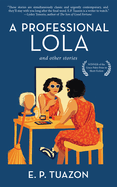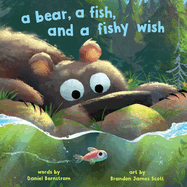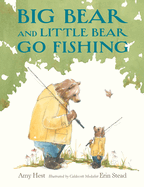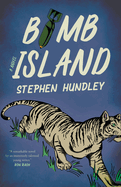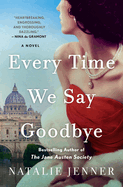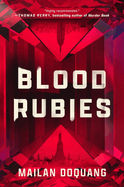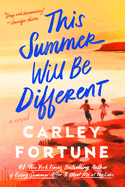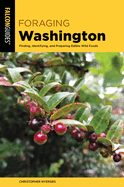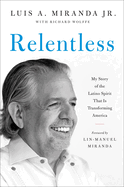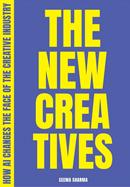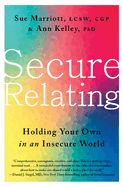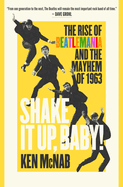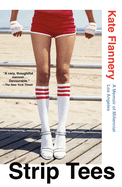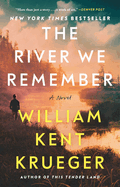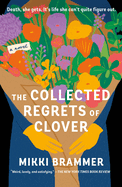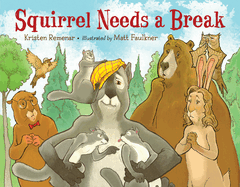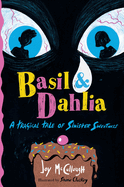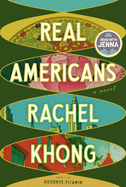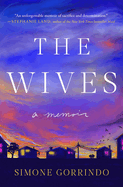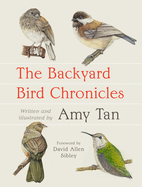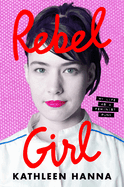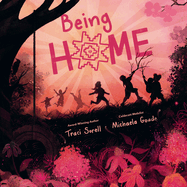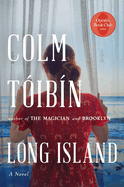Friday, May 24, 2024
In this issue, we recommend Bite by Bite: Nourishments and Jamborees by Aimee Nezhukumatathil, whose second essay collection celebrates her Indian Filipina heritage and considers "the ways food binds people together, as well as the complex, delicious alchemy of taste and memory"; and A Professional Lola by E.P. Tuazon, "a poignant, sly" story collection that examines "their diasporic Filipino American community." Plus, A Bear, a Fish, and a Fishy Wish by Daniel Bernstrom and illustrated by Brandon James Scott, a "fast, funny" rhyming picture book about a "hungry, hapless bear" and "an adorable mostly-eyes salmon baby." And so many more!
In The Writer's Life, novelist Claire Messud discusses the family stories that led her to write This Strange Eventful History as "an increasingly interior narrative" swept up in profound historical incidents.
A Professional Lola
by E.P. Tuazon
E.P. Tuazon's collection of short stories A Professional Lola is a poignant, sly examination of their diasporic Filipino American community, told through interactions with extended family, intimate friends, adoptive/adaptive cultural clashes, and, of course, delectable food.
The opening and closing narratives, both featuring missing grandparents, are memorable bookends to the collection's 13 stories. In "Professional Lola," a "strange trend spread[s] through the Filipino community"--hiring a "propesynal na artista" to "act like your deceased lola [grandmother]." The narrator's initial wariness dissipates during his nephew's multigenerational birthday party as he bears witness to, then experiences for himself, Lola's unconditional love. In "Carabao," a young grandson struggles with the inexplicable transformation of his powerful Lolo (grandfather) into housedress-wearing, nail-painted Lola. Remembering the provenance of the "old carabao bell around her neck"--worn by Filipino water buffaloes whipped into performing the heaviest farm labor--helps the boy finally understand his beloved grandparent's bravery.
In between, stories are otherworldly: three middle-school teachers cast spells during book club in "Blood Magic"; a teen visits his missing father's isolated island in "Far from Home." A few feature siblings raised oceans apart: an American brother is haunted by his Filipino brother's fiery death in "Barong," two separated half-siblings meet because of their late father and his supernatural obsessions in "After Bigfoot." Parents and children clash in "Promise Me More" and "Handog."
Tuazon's cover deservedly displays "WINNER of the Grace Paley Prize in Short Fiction." Their stories resonate with an assured simplicity: "Writers know how to write what they see. Nothing more, nothing less," a character shrewdly notes. Tuazon observes, records, and illuminates. --Terry Hong
Discover: E.P. Tuazon's second collection of short stories explores their Filipino American identity through 13 stories highlighting extended family and diasporic community.
This Strange Eventful History
by Claire Messud
The multigenerational saga is as old as The Mahabharata, but contemporary authors still put their own spins on the genre. An erudite example is This Strange Eventful History, Claire Messud's epic recounting of seven decades of a pied-noir family--those of European descent born in Algeria before the country's 1962 independence from France. The story of the Cassars, based on Messud's family, begins in 1940, when military attaché Gaston is sent to Greece to find out what "the fascist Italians" are "up to in Albania." Yet he feels "trapped in this remote and irrelevant backwater," in part because he misses his family, including wife Lucienne, with whom he struggles to maintain an aura of an ideal marriage, and their two children: François, the older child, and Denise, who fears the Nazis plan to kill their father.
Messud (The Woman Upstairs; The Burning Girl) follows her characters through multiple locales, from Algeria to Toronto, Buenos Aires to Sydney. Her novel changes perspectives throughout, with chapters devoted to Denise's piousness, which stems from the family's Catholic upbringing; François's rejection of their father's wish that he study science and his pursuit of a business degree in Paris instead, because he wants "to conquer the world"; François's marriage to Barbara, a Canadian woman he meets at Oxford; and Chloe, one of their two daughters, whose determination to become a writer is complicated by concern over her aging relatives. Messud's chronicle of one family's history, the political events that shape them, and "these strange, beautiful, appalling times" in which they live is as fine a family saga as one will read. --Michael Magras, freelance book reviewer
Discover: This Strange Eventful History by Claire Messud, inspired by her family, dramatizes 70 years of the Cassars, from their time in pre-independence Algeria to the search for a homeland of their own.
Lies and Weddings
by Kevin Kwan
In the romantic comedy Lies and Weddings, Kevin Kwan (Crazy Rich Asians) delivers another sly, hilarious comedy of manners about the high class, the low class, and the rich with no class.
Hong Kong native Arabella, the Countess of Greshamsbury, is a former model and current luxury hotel mogul who is finally embarking on the grandest campaign of her life, marrying off her three adult children to rich minor European royals of her choosing. Unfortunately, her eldest daughter's extravagant Hawaiian wedding is thrown for a loop when a volcanic fissure opens in the middle of the ceremony site. Additionally, during the proceedings, a hot mic broadcasts a confession of love from Arabella's son, international heartthrob Rufus Gresham, to down-to-earth doctor Eden Tong, the last person Arabella has in mind as a future daughter-in-law.
What follows is a class-driven comedy of errors to make Jane Austen proud, as Kwan dishes out another juicy, satire-tinged romp about the lives of the opulent class. The characters behave to the standard his fans have come to expect, dressing in couture from epically curated closets, globetrotting with the casual air of someone walking into the next room, and dealing out deadly insults in only the poshest, politest tones. The third-person omniscient narrative voice follows each character's movements with the chattiness of a gossip columnist. It creates enough remove to emphasize the untouchable nature of the fantastically wealthy even as it invites laughter at their eccentricities. Readers hungry for an escapist tale with a soupçon of social criticism and a dash of true love overcoming obstacles should find Lies and Weddings a delicious diversion. --Jaclyn Fulwood, blogger at Infinite Reads
Discover: Crazy Rich Asians author Kevin Kwan returns to form in this dishy, hilarious comedy of errors about the lives and loves of the obscenely rich.
Blue Ruin
by Hari Kunzru
In Blue Ruin, Hari Kunzru's heady and pitiless peak-pandemic-era novel of art and commerce, the direness of poverty weighs no more heavily than the twining crises of tarnished ideals and squandered talent.
The pandemic is raging when narrator Jay Gates--a middle-aged, biracial, English-born New Yorker and fallen art star--finds himself delivering groceries and living in his car. A delivery to a lake house outside the city brings him face-to-face with his ex-girlfriend Alice, whom he hasn't seen in two decades; she has since married Rob, once Jay's closest friend. The couple has borrowed the lakeside property to escape the virus-permeated city and enable Rob, a successful painter, to work immersively. When Alice realizes that Jay, still recuperating from Covid-19, is in no condition to finish his deliveries, she lets him stay on the property. Her effort to keep his residence a secret from Rob and Rob's paranoid gallerist is as doomed as it sounds.
The details of Jay and Alice's breakup, which he recollects at length, delay answers to Blue Ruin's tantalizing questions: Why did Jay disappear from the art scene, and how did he end up homeless? Kunzru (White Tears; Red Pill) dexterously blends all the novel's concerns in a knockout finale centered on the sale of a painting. Jay may no longer be famous, but he understands the nature of modern celebrity: "Only in the system we have, where everyone is expected to be an entrepreneur of the self, is anonymity a kind of death." --Nell Beram, author and freelance writer
Discover: In this heady and pitiless peak-pandemic-era novel of art and commerce, the direness of poverty weighs no more heavily than the twining crises of tarnished ideals and squandered talent.
Bomb Island
by Stephen Hundley
List the details of Stephen Hundley's debut novel, Bomb Island, and some might wonder how a single book could possibly contain so many improbable elements: the atomic bomb accidentally dropped during a military simulation decades earlier; the found family--all with chosen names like Fish and Nutzo--who choose to live on Bomb Island off the coast of Savannah, Ga.; the bully who runs a local fishing charter; and oh, yeah, there's also a white tiger on the loose? In the hands of many emerging writers, this mélange might dissolve into an outrageous mess; instead, Bomb Island is outrageously good thanks to Hundley's revelatory character work and artful details.
Like all the island's residents, the tiger is there because of Whistle, known and trusted as mother, caretaker, lover, friend, or guide. Fish arrived when he was five, after Whistle saved him and his mother from the fire that destroyed their Atlanta home. "The other people who lived with Whistle said the same. She had saved them all from something." And while Whistle denies any particular powers, she shows them how to live: "not off the land, but gently tucked inside of it." Soon, however, the tiger threatens that gentle existence, and Fish, now 14, has to decide: Will he fold into the history of toxic masculinity and violence or heed Nutzo's simple advice to "Be thoughtful, Fish"? Fans of Southern writers with a penchant for outcasts and misfits will marvel at Fish. His is a terrible, beautiful story, and readers will equally hurt and hope for him. --Sara Beth West, freelance reviewer and librarian
Discover: Bomb Island is greater than the sum of its many unexpected parts as it raises chewy-good questions about the many ways a person can harm another and the value of unsolicited and unconditional care.
Every Time We Say Goodbye
by Natalie Jenner
Natalie Jenner (The Jane Austen Society) plunges readers into a glittering world of cinema, censorship, and complex relationships in postwar Italy in her third novel, Every Time We Say Goodbye. After her playwriting career takes a disappointing turn, Vivien Lowry (featured in Jenner's Bloomsbury Girls) heads to Rome to work as a script doctor at Cinecittà Studios. She meets a colorful cast of characters--actors, producers, directors--from various countries, all doing their best to enjoy la dolce vita while fighting strict censorship by the Vatican. More poignantly, though, Vivien and her new friends are also still reckoning with their experiences during World War II. Vivien is searching for news of her lost fiancé, David, a POW who may have ended up in Italy.
Jenner unspools Vivien's story alongside that of la scolaretta, a local resistance fighter responsible for taking down a Nazi commander in 1943. Known as "the schoolgirl assassin," the young woman met a gruesome end, but her bravery has inspired a film script--one that Vivien's colleague Nino is determined to slip past the censors.
With warmth and compassion, Jenner explores her characters' triumphs and tragedies. Several of Vivien's friends from Bloomsbury Girls (including art collector Peggy Guggenheim) resurface, and their combined support eventually helps Vivien find clarity. Living in the Eternal City, Vivien must face up to her own past and how it affects her present, and decide what kind of future she wants to build. With lush descriptions, vivid period detail, and fascinating personalities, Jenner's cinematic narrative is shot through with both pain and hope. --Katie Noah Gibson, blogger at Cakes, Tea and Dreams
Discover: Natalie Jenner's vivid third novel explores cinema, censorship, and complex relationships in Rome after World War II.
Mystery & Thriller
Blood Rubies
by Mailan Doquang
Blood Rubies opens with jewel thief Rune Sarasin tied to a chair inside a burning building on the brink of collapse and asking, "as she had repeatedly over the past seven days, just how it had come to this."
What follows is the answer to that question: Just how did a small-stakes jewel thief living in Bangkok wind up trapped in a burning building in New York City? It starts with a jewel theft gone wrong, as Rune and her boyfriend, Kit, lift a bag of rubies off an American gemstone trafficker. But when the two realize they've been identified--and that Kit's kid sister has gone missing--they are sucked into a series of plots more complex than either could have imagined.
In Rune, Mailan Doquang has created a criminal to root for, a slightly damaged "thrill-seeker and adrenaline addict" who fancies herself something "like Robin Hood, only she and Kit kept the profits." With Rune at the novel's center, Doquang launches into a fast-paced mystery filled with action and adventure: Rune zooms across Bangkok on the back of Kit's motorcycle, breaks into a priest's office, finds herself on the wrong end of a sex trafficking ring, winds up in cahoots with the very man she stole from in the first place, and more. It's a lot to pack into one novel, and it can feel chaotic at times. But Blood Rubies proves that it's worth suspending disbelief to get lost in an exciting, suspenseful trip around the world with a heroine determined to save herself, the people she loves--and maybe the jewels she stole, too. --Kerry McHugh, freelance writer
Discover: This fast-paced, action-packed novel takes a jewel thief around the world in a bid to save her kidnapped boyfriend's life in the days following a theft gone wrong.
Romance
This Summer Will Be Different
by Carley Fortune
Romance author Carley Fortune's ability to capture the euphoric essence of summer love is evident in This Summer Will Be Different. The novel takes place primarily on the coast of Prince Edward Island, where the salt air and summer sun set the scene for an extra hot and lively romance.
Lucy's best friend, Bridget, gives her three rules before Lucy visits Bridget's hometown on the island: "Eat your weight in oysters," "leave the city behind," and "don't fall in love with my brother." But Bridget's arrival is delayed, so Lucy spends an unforgettable night with a handsome local named Felix, only to find out that he is Bridget's off-limits brother. Over the next five years, Lucy's yearly visits to PEI are filled with sandcastle competitions, oyster shucking, and a secret annual hookup with Felix. When Bridget unexpectedly asks Lucy to join her on the island nine days before her wedding in Toronto, Lucy is faced with Bridget's pre-wedding crisis and her own complicated feelings for Felix.
Fortune (Every Summer After, Meet Me at the Lake) intersperses chapters counting down to Bridget's wedding with chapters chronicling the past five years of Lucy's vacations. Lucy and Bridget's week of nostalgic activities conveys the importance of found family and unconditional love between friends. Lucy and Felix's long history slowly unfolds to reveal what happened the previous summer that turned stolen glances into avoided ones. Fortune builds delectable suspense, effortlessly balancing steamy passion with fulfilling platonic and familial love. The charming Prince Edward Island setting basks in sunshine that brings the characters closer to one another and their happy-ever-afters. --Clara Newton, freelance reviewer
Discover: Carley Fortune's coastal summer novel, set on charming Prince Edward Island, explores true unconditional love, found family, and a forbidden romance.
Food & Wine
Foraging Washington: Finding, Identifying, and Preparing Edible Wild Foods
by Christopher Nyerges
This second edition of Christopher Nyerges's Foraging Washington: Finding, Identifying, and Preparing Edible Wild Foods is an incomparable reference for anyone looking to wander through or simply learn about the bounty of nature's offerings in the incredibly diverse natural environment of Washington. Nyerges comprehensively details the nine ecoregions in the state, each replete with its own abundant array of enticing wild foods.
One of his guide's standout features is the clear descriptions of plants, which makes it easy for readers to confidently identify what they find in the wild. Nyerges supplements these with photographs, recipes, and nutritional information. This degree of specificity is crucial when foraging for food, as misidentification can have serious consequences. A few plants, such as poison hemlock, can make people sick or even be fatal, as can foraging in areas where pesticides or other toxic chemicals have been in use.
But most of the plants to be found in these regions, including seaweeds, dandelions, and ferns, as well as less familiar salal berries and wood sorrel, can be used as food, medicine, or both--and Nyerges carefully lays out all their uses. Readers can even test their knowledge before venturing out by taking a quiz at the end of the book, featuring such valuable nuggets as whether it's true or false that all "berries that glisten are poisonous."
In addition to helping readers identify and harvest useful plants, Nyerges emphasizes the importance of sustainability and responsible foraging to avoid overuse of these resources and to preserve them for generations to come. --Elizabeth DeNoma, executive editor, DeNoma Literary Services, Seattle, Wash.
Discover: Foraging Washington is an essential guide to safely getting the most out of the state's wonderful and edible natural offerings.
Biography & Memoir
Relentless: My Story of the Latino Spirit That Is Transforming America
by Luis A. Miranda and Richard Wolffe
Puerto Rican activist and political strategist Luis A. Miranda Jr. juxtaposes the personal and political in his first book, Relentless. Miranda, the founding executive director of the Hispanic Federation and the father of librettist Lin-Manuel Miranda, charts his journey from his hometown of Vega Alta, P.R., to New York City and the ways he has worked to improve the lives of Latinos. Part memoir, part handbook for connecting with Latino voters, Relentless offers a glimpse into how Miranda advanced through the halls of power and his nonstop efforts to secure better resources and opportunities for his community.
Miranda begins by recounting his arrival at John F. Kennedy International Airport, as a new psychology student at New York University. He writes of discovering the city as a student and an activist, meeting his wife, Luz, and building a life together. Miranda's account of his early career reads like a "who's who" of New York politics in the 1980s and '90s: Ed Koch, Rudy Giuliani, Chuck Schumer. Miranda shares his frank perspectives on each of these leaders and the initiatives he worked on, while incorporating stories from his family life. Later, Miranda writes about Hamilton and the tremendous impact its success had on his entire family. The book's final third delves into the issues that matter to the massive (and growing) voter base of Latinos in the U.S., including housing and education, and offers advice for anyone interested in winning these voters' support.
Relentless is an insightful and inspiring personal story and a roadmap for mobilizing Latino voters in the 21st century. --Katie Noah Gibson, blogger at Cakes, Tea and Dreams
Discover: Political strategist Luis A. Miranda Jr.'s insightful memoir recounts his experiences as a New Yorker and his tireless efforts on behalf of Latinos.
Business & Economics
The New Creatives: How AI Changes the Face of the Creative Industry
by Seema Sharma
In the fascinating collaboration The New Creatives: How AI Changes the Face of the Creative Industry author Seema Sharma provides a series of interviews with an artificial intelligence (AI) engine itself, delving deep into the realm of creative applications it can offer and the evolving relationship between humans and intelligent machines. Sharma goes beyond the typical fear-based discussions about AI replacing humans to instead demonstrate ways in which AI tools can augment and enhance human creativity, and where the pitfalls might lie. AI is useful for analyzing patterns in existing data, but what it produces is necessarily derivative or constrained by what it has learned from its inputs; such constraints include repeating biases in that material. AI can combine and remix elements upon command--but it can draw only on elements that already exist.
Sharma, an advertising agency creative director, explores case studies and examples in which AI has been used to generate ideas, inspire artists and writers, and even develop alongside humans in fields such as music composition, the visual arts, and storytelling. She engages her AI co-writer in discussions about the ethical implications of AI in creative industries, raising questions about authorship, authenticity, privacy, and the role of human intuition and awareness of context in innovative endeavors. She expresses an understandable concern about AI displacing human beings in artistic roles, while suggesting the optimistic spin that it will take over more mundane and replicable aspects of that work.
The New Creatives outlines timely and thought-provoking guidelines and considerations about how AI can augment human creativity in what might be termed the "symbiotic partnership." --Elizabeth DeNoma, executive editor, DeNoma Literary Services, Seattle, Wash.
Discover: The New Creatives is a novel and inspiring demonstration of using AI in the service of human creativity.
Essays & Criticism
Bite by Bite: Nourishments and Jamborees
by Aimee Nezhukumatathil
Aimee Nezhukumatathil's delectable second essay collection, Bite by Bite, gathers a cornucopia of foods laden with delight, nostalgia, worry, homesickness, and above all, nourishment in its many forms. In 40 brief "appetizing origin stories of care and sustenance," Nezhukumatathil explores the ways food binds people together, as well as the complex, delicious alchemy of taste and memory.
Nezhukumatathil (World of Wonders) begins with rambutans, a spiky, unruly fruit that brings to mind her Indian grandmother, with whom she shares a mane of dark, untamable hair. In Nezhukumatathil's hands, food is much more than just food: it opens up space to ponder questions of beauty, colonization, self-acceptance, and family. These themes run through the entire collection, as when Nezhukumatathil creates "a self-portrait" of her Indian Filipina heritage and the resulting arguments over which country grows the sweetest mangoes, or when she recalls her first taste of jackfruit at her grandparents' home in Kerala. She recounts her husband's journey through a snowstorm to buy pineapple for their eldest son, and the taste of both community and grape pie she discovered at a grape festival in western New York. Her essays delve, too, into the complexities of food and history, shared and personal: the vanilla bean's ties to enslavement, the use of "coconut" as a racial slur, the moment in an isolated cherry orchard when she feared, briefly, for her life. But mostly, Nezhukumatathil's handpicked feast resembles her beloved halo-halo: a "richness of delights" made all the sweeter for its variety, with something to savor in every bite. --Katie Noah Gibson, blogger at Cakes, Tea and Dreams
Discover: Aimee Nezhukumatathil's delectable second essay collection offers a rich, varied feast of meditations on family, love, colonization, and the deep alchemy of food and memory.
Psychology & Self-Help
Secure Relating: Holding Your Own in an Insecure World
by Sue Marriott and Ann Kelley
Navigating relationships, romantic and otherwise, is a lifelong endeavor. Fortunately, Sue Marriott, a clinical social worker, and Ann Kelley, a licensed psychologist, have written Secure Relating: Holding Your Own in an Insecure World, in which the pair share key insights, theories, and tools distilled from over 30 years of expertise in the field.
The married couple, known for their podcast Therapist Uncensored, take well-known attachment theory as a starting point, then thoughtfully deepen and expand it to the concept of the Modern Attachment-Regulation Spectrum, which uses arrows and colors to describe states of mind. The authors also cover related concepts, such as internal working models. Their straightforward and informative writing is enhanced by the generous inclusion of scenarios and examples, as well as diagrams and charts.
In keeping with the comprehensive nature of the work, the book also delves into neuroscience and many classic experiments conducted in the field of relationships. Marriott and Kelley are rigorously inclusive, making sure to discuss different experiences and backgrounds and to not brush aside systemic issues. They are also careful to note the contributions women have made to the field, giving attribution to researchers whose work often goes uncredited.
While its writing is often conversational and encouraging, Secure Relating is not a pop psychology book: readers won't find bulleted lists, summaries, or easy-to-digest takeaways sandwiching each chapter. They should be prepared to don their reading glasses and dig into footnotes and summarized academic studies. The result is not for the faint of heart, but all the better for it. --Nina Semczuk, writer, editor, and illustrator
Discover: The married cohosts of the Therapist Uncensored podcast offer a comprehensive and empowering guide to understanding and improving relationships.
Health & Medicine
It's Not Hysteria: Everything You Need to Know About Your Reproductive Health (but Were Never Told)
by Karen Tang
It's Not Hysteria: Everything You Need to Know About Your Reproductive Health (but Were Never Told) covers a wide range of gynecological and related topics, from common conditions such as polycystic ovary syndrome and endometriosis to gender diversity, menopause, abortion, and much more. Dr. Karen Tang also walks readers though what to expect during various medical procedures, explaining what they can ask for and how to speak with their doctor about concerns.
It's Not Hysteria is a terrific, informative reference guide. It's not overly embellished with personal stories or details, and it's easy to flip to the appropriate chapter for any need. As a gynecologist and gynecologic surgeon, Tang is well qualified in the field and delivers the material in a clear and understandable way. As such, this book is a valuable resource whether readers are experiencing their first period or first stages of menopause. If readers are nervous about their first pelvic exam or cancer screening, Tang provides straightforward descriptions and suggestions to minimize anxiety.
Throughout the book, Tang also touches on the lack of comprehensive research for gynecologic issues. For instance, she notes, if white men suffered the painful symptoms of fibroids--a condition that affects 80% of Black women--Tang is sure that research would have discovered both a cause and cure for that ailment. Explaining even tough subjects with compassion and inclusivity, Hysteria is a wonderful resource for anybody with a uterus, who used to have a uterus, or who just exists in a human body. --Alyssa Parssinen, freelance reviewer and former bookseller
Discover: Explaining even tough subjects with compassion and inclusivity, Hysteria is a wonderful resource for anybody with a uterus, who used to have a uterus, or who just exists in a human body.
Performing Arts
Shake It Up, Baby!: The Rise of Beatlemania and the Mayhem of 1963
by Ken McNab
Ken McNab called his previous book about the Fab Four And in the End: The Last Days of the Beatles; its follow-up might have been called And in the Beginning. The marvelously micro Shake It Up, Baby!: The Rise of Beatlemania and the Mayhem of 1963 examines the band's breakthrough year, when, as the author puts it, "cause and effect fatefully collided."
McNab chronicles every Beatle move, starting with the January 1963 release of "Please Please Me," which "set in motion the Beatles' big bang" in Britain, and ending with the late-1963 release of "I Want to Hold Your Hand," which ultimately shot to the top of both the British and--a first for a British pop band--American singles charts. Gig recaps, critics' appraisals, label drama, band finances, Fab romances--it's all here. Distinguishing this Beatles-centric offering is the inclusion of a wealth of everyday-person eyewitness accounts of the group's ascent, many stories shared directly with the author. McNab also spotlights unsung heroes whose invisible hands helped push the boys through to international stardom. Beatles-loving readers may shudder to think that were it not for one teenage superfan from Maryland, the band may never have broken through Stateside.
Shake It Up, Baby! makes it impossible to deny how deserved the (mostly) uncomplaining, hardworking band's success was. The book may leave readers greedy for more, and who knows? If they cheer at this Beatlemaniacal volume, it may convince McNab to tackle 1964. (Until then, Paul McCartney's take will have to do.) --Nell Beram, author and freelance writer
Discover: Ken McNab's marvelously micro Beatles book examines the band's breakthrough year, when "cause and effect fatefully collided."
Art & Photography
DIY Thrift Flip: Sewing Techniques for Transforming Old Clothes into Fun, Wearable Fashions
by April Yang (Coolirpa)
April Yang has built a successful online presence through her DIY fashion and upcycling, where she is known as Coolirpa on YouTube and Instagram. She takes her accessible sewing tips offline in DIY Thrift Flip: Sewing Techniques for Transforming Old Clothes into Fun, Wearable Fashions, an easy-to-follow guide for anyone interested in altering clothing, whether from their own closet or purchased secondhand for the express purpose of alteration. Yang starts with a guide to the sewing tools needed for garment modification. She breaks down her most-used sewing machine features and identifies tools that at-home sewers can wait to acquire until they have gained more alteration experience. From there, she moves into a quick primer with step-by-step photos on many basic techniques, such as sewing elastic and gathers, hemming, and working with different fabric types.
Before moving into project suggestions and inspiration, Yang shares her advice on sourcing clothes and fabrics (including how to guesstimate size when dressing rooms aren't available and what elements and flaws "can or can't be fixed") along with basic garment composition and tailoring guidance (such as adding pockets or sleeves, tracing clothing items, using traditional patterns, and taking garments apart with a seam ripper). Her suggested projects, which she hopes "inspire you to view secondhand clothes in a different way," include turning a dress shirt into a bow-tie blouse, creating a pair of overalls from a matching pants and shirt set, and transforming curtains into a tiered miniskirt. Navigable and cheerful, DIY Thrift Flip is a handy, encouraging resource for new and experienced crafters alike. --Kristen Coates, editor and freelance reviewer
Discover: DIY Thrift Flip is an easy-to-follow clothing alteration guide full of inspiration and advice from a successful YouTuber.
Now in Paperback
Strip Tees: A Memoir of Millennial Los Angeles
by Kate Flannery
From Kate Flannery, who now works for RuPaul's Drag Race, comes Strip Tees, a memoir of her 20s living in Los Angeles and working at American Apparel. Flannery's debut, set in the 2000s, is an engaging personal history of a corporation, and a reflection on the manipulation of feminist ideals for profit. Fresh from Bryn Mawr with a bachelor's degree in creative writing, Flannery works a stint as an office drone at Urban Outfitters in Philadelphia. She moves to Los Angeles, seeking a reset and better opportunities in fashion. A woman in a bar recruits her to join American Apparel, an upstart company selling hip clothes made in the U.S. Flannery is desperate for steady income, impressed by the company's feminist mantras and many female employees, and eager to catch a wave, so she joins. After an impromptu amateur modeling session--standard for young female employees, apparently--she is hired to work at a store in Echo Park.
At first, she's worried she has traded office drone life to be a retail go-fer. But when she hires and photographs a young woman that the founder and CEO finds attractive, Flannery's career is turbocharged. She begins touring the country, opening store after store as the brand expands. She revels in the responsibility, glamour, and seeming liberations--until the contradictions of her life and work become irreconcilable. Flannery's beliefs and social awareness are challenged, and she must redefine self-respect. Told in unembellished prose, the story propels itself, but Flannery's telling is balanced with thoughtful retrospection, contemporary context, and dark comedic irony. --Walker Minot, writer and editor
Discover: Strip Tees is a propulsive memoir of a young woman in her 20s in 2000s Los Angeles, corporate feminism, and self-discovery amidst thinly veiled exploitation.
The River We Remember
by William Kent Krueger
William Kent Krueger's The River We Remember is the story of a close-knit farm town simmering with secrets. On Memorial Day in 1958, the people of Jewel, Minn., honor the town's veterans with a traditional parade through the three-block business district. But soon "hatred from wars long past and wars more recent" reveals it "still had hooks set in so many hearts." Krueger (Ordinary Grace) displays his deep affection for nature, describing Jewel's setting as having "wild oats and goldenrod and blazing star and a dozen other wildflowers"; these line the lane to the Alabaster River, which "shimmered gold in the late afternoon light." But on this spring day, the bucolic site is tainted: Black Earth County's wealthiest landowner is floating in the Alabaster, the victim of a shotgun blast. As sheriff Brody Dern investigates the apparent murder of the notoriously cruel and heartless Jimmy Quinn, public sentiment targets Noah Bluestone, a Sioux whose ancestors were driven from the county. Bluestone returned from World War II with a Japanese wife, doubling the disdain of vocal racists. Tension builds as Dern searches for motives.
Krueger's well-developed citizens of Jewel provide multiple subplots. Quinn's survivors don't mourn; a colorful woman public defender gains the Bluestones' trust; two adolescent boys flirt with danger; and Dern grapples with the investigation while finally facing the emotional war wounds and truths buried in his heart. Quinn's death isn't tragic, but the fallout threatens deeply sympathetic townspeople, keeping readers mesmerized through the unpredictable climax of this often tender, evocative novel. --Cheryl McKeon, Book House of Stuyvesant Plaza, Albany, N.Y.
Discover: The bucolic calm of a Minnesota farm community in the mid-20th century is rocked by an apparent murder as an investigation reveals secrets and awakens prejudices among the townspeople.
Silver Nitrate
by Silvia Moreno-Garcia
Movie magic has its dark side in Silver Nitrate, a twisted horror thriller by Silvia Moreno-Garcia (The Daughter of Doctor Moreau; Mexican Gothic). Montserrat Curiel is a struggling sound editor in 1990s Mexico City; she's talented but held back by a jerk of a boss and his boys'-club style of management. Her friend Tristán Abascal, an actor whose never-quite-first-rate career was stalled by scandal, discovers that his new neighbor is director Abel Urueta. Because Tristán and Montserrat share a love of cult horror movies, he invites her along to dinner with Urueta, who presents them with a proposition. Decades earlier, Urueta participated in an attempt by a Nazi occultist to cast a literal spell through filmmaking. The film was never completed, and Urueta believes the curse of the unfinished spell is what ended his career. He believes if Montserrat and Tristán can help him finish the missing scene, the curse will be lifted. But once they begin work on the film, Montserrat and Tristán find themselves entangled with supernatural enemies.
Moreno-Garcia skillfully balances cult-film lore, movie-making techniques from different periods, and occult scheming with well-constructed, intriguing characters. The backdrop of Urueta's career and the origin of the cursed film is intricately constructed and, once production is underway, the thrills never stop. The menaces of racism and misogyny looming over the action add a thoughtful streak that gives some depth to the narrative. Thriller fans and movie buffs will be on the edges of their seats. --Kristen Allen-Vogel, information services librarian at Dayton Metro Library
Discover: Spellcasting through filmography is a dangerous game in this exhilarating supernatural thriller.
The Collected Regrets of Clover
by Mikki Brammer
The Collected Regrets of Clover is journalist Mikki Brammer's first novel, a heartfelt and poignant story focusing on a death doula and all she learns in her work with death and dying--and, in the process, about life and living.
Clover Brooks was just five years old when she first saw a person die (her kindergarten teacher), and has witnessed 96 more deaths since then in her work as a death doula. "A birth doula helps usher someone into life, and a death doula helps usher them peacefully out of it," Clover explains patiently to a new neighbor. It's work she's proud of and honored to do, though she realizes that her proximity to--and comfort with--death marks her as "out of step with the rest of the world." And perhaps she is a bit odd, but she's mostly okay with that--even if she's also a bit lonely, and unsure of how to go about becoming less so: "It wasn't that I was opposed to the idea of friendship, it's just that if you don't get close to anyone, you can't lose them."
That's all thrown into chaos when Clover's latest client--a wealthy old woman with a charming smile and a sense of adventure--inadvertently sets Clover on a scavenger hunt through old photos and letters in search of a long-lost lover. Though tinged with the sadness, The Collected Regrets of Clover is ultimately a beautiful story of belonging, connection, and what it really means to live life to its fullest. --Kerry McHugh, freelance reviewer
Discover: A death doula learns to be as comfortable with life as with death in a heartfelt novel about grief, love, and belonging.
Children's & Young Adult
A Bear, a Fish, and a Fishy Wish
by Daniel Bernstrom, illus. by Brandon James Scott
The lovable, bumbling bear from A Bear, a Bee, and a Honey Tree returns in the lickety-split, rhyming picture book A Bear, a Fish, and a Fishy Wish by Daniel Bernstrom and illustrated by Brandon James Scott.
A broad-nosed, long-clawed bear lounges heels-over-head between the boughs of a tree. The spare text identifies the protagonist: "a bear." Readers meet an adorable mostly-eyes salmon baby on the next page as it swims through sunlit, weed-forested waters: "a fish." Soon the bear spies the unaware fish cresting the surface of the river, and the sighting spawns "a fishy wish" for a slippery snack. The bear swims, runs, and uses stealth to nab the leaping fish from the air, but a mighty wave filled with the fish's glaring kinfolk ("fish galore") sweeps the hunter into the river. When the bear emerges to find the fish out of water and helpless, a war between hunger and compassion brings a surprising and humorous conclusion.
Scott's digitally rendered illustrations convey a sense of movement both in the characters and the rushing water, and Bernstrom's light, rhyming narrative bounds along with equal liveliness. Bear and fish have wonderfully expressive faces that imbue the simple story with plenty of emotion as the bear learns one should be careful what one wishes for. A Bear, a Fish, and a Fishy Wish should appeal to readers who love fast, funny stories, as well as fans of the previous book who want to see what the hungry, hapless bear has gotten up to. --Jaclyn Fulwood, youth services manager, Allen County Public Library
Discover: A bear with a wish for fish ends up with a wash in this fast, funny picture book.
Big Bear and Little Bear Go Fishing
by Amy Hest, illus. by Erin E. Stead
With Big Bear and Little Bear Go Fishing, seasoned picture-book pros Amy Hest (Letters to Leo; Charley's First Night) and Erin E. Stead (A Sick Day for Amos McGee; The Sun Is Late and So Is the Farmer) make evident their keen understanding that for the youngest readers, feelings themselves can be dramatic moments. This externally quiet story, in which emotions ebb and flow along with a series of small events, should make a big impression.
When Big Bear announces that he'd like to go fishing, Little Bear is all in. They get suited up, and "now they are ready for fishing./ Almost." They gather their fishing poles, and "now they are ready for fishing./ Almost." After a couple more false starts, they set off for the lake. Once they're in their little fishing boat, they wait for a fish to bite. They have a close call, but their prey ultimately eludes them. They return home and cuddle outdoors in a hammock, clearly basking in the afterglow of a day well spent.
Anticipation, frustration, disappointment, affection--Hest doesn't spell out her book's big feels. She doesn't have to: throughout Big Bear and Little Bear Go Fishing, Stead's dainty watercolor-and-pencil illustrations are clued in. When Little Bear experiences, say, apprehension while he "looks at the wobbling and listens to the creaking" boat, readers see a downcast, slump-shouldered cub fairly glued to the dock. Naturally, Big Bear is there with his open-armed reassurance. Their relationship, not fishing, is the real story here. --Nell Beram, freelance writer and YA author
Discover: This picture book's externally quiet story should make a big impression as two bears' emotions ebb and flow along with a series of small events.
Squirrel Needs a Break
by Kristen Remenar, illus. by Matt Faulkner
Wife and husband team Kristen Remenar and Matt Faulkner (Groundhog's Dilemma) have created in Squirrel Needs a Break a winning picture book filled with humor, heart, and a celebration of community.
Squirrel's an attentive dad, but after being "stuck in the nest" with three exuberant kits all winter, he's "even grumpier than usual." So, Sparrow, Bear, Hare, Owl, and Groundhog decide to give Squirrel a much-needed break. While Owl takes Squirrel for a breakfast of peanut butter pie, Hare makes pancakes with the kits. Then Hare turns the energetic little ones over to Sparrow (yes, "syrup happened") and Hare and Squirrel proceed to the spa. Meanwhile, Sparrow gives the sticky kits a bath, then hands them off to Owl, who then delivers them to Groundhog. At first, Squirrel enjoys his time off with friends, but during yoga class, he begins to miss his family. As the day winds down, Squirrel and his kits are reunited and Bear has one final surprise in store.
Remenar's earnest characters are as endearing as her plot is full of energy. Her clever text includes fun dialogue and allows plenty of room for Faulkner's expressive digital illustrations. His deftly rendered, cartoony art depicts characters with human-like features and body language, contributing to the story's relatability. Child readers will likely delight in the kits' capering while caregivers will almost certainly connect with the exhausted animals. Indeed, this entertaining, affectionate picture book title should be as big a hit with adults as it is with their rambunctious kits! --Lynn Becker, reviewer, blogger, and children's book author
Discover: Squirrel Needs a Break, a winning picture book filled with humor and heart, celebrates the benefits of community banding together to form a "family of friends."
Basil & Dahlia: A Tragical Tale of Sinister Sweetness
by Joy McCullough, illus. by Shane Cluskey
Author Joy McCullough (Enter the Body; Blood Water Paint) and illustrator Shane Cluskey's Basil & Dahlia is "Hansel & Gretel" by way of A Series of Unfortunate Events: a quirky, lightly magical mystery filled with mouthwatering food and sinister adults.
Basil and Dahlia's parents blew up in a greenhouse explosion, and now they are orphans, tragically in the care of a nondescript social worker who plans on separating them. Rather than face the future alone, Dahlia and Basil leap from a moving train and stumble through the streets of New York City, where they are lifted out of a dumpster dive by celebrity chef Laurel Fox. She seems like the perfect person to take in two hungry orphans, but as she welcomes the siblings into her home, they discover that Laurel's heart is not as warm as the desserts she bakes. Can the two escape from her delicious-yet-dangerous mansion?
McCullough's character work shines: the titular heroes struggle with guilt over their parents' demise even as they consistently support each other; the creative yet dastardly villains are only outshone by the everyday workers who step up to help. The only hitch can be found in the narrator, an unnamed technophobe presumably from the 18th century, whose occasionally wry comments otherwise detract from the unfolding mystery. Stark, stylized illustrations from Cluskey (The Sackville Street Caper) are perfectly creepy and help set the unconventional tone.
Basil & Dahlia, which borders on delightfully ridiculous, should be great for fans of Kathryn Siebel's The Trouble with Twins or young readers who find The Great British Bake Off suspicious. --Nicole Brinkley, bookseller and writer
Discover: Fans of lightly magical mysteries with quirky heroes will likely find this middle-grade novel a ridiculous yet delicious treat.
Shelf's May Stars
The Writer's Life
Claire Messud: Repeatedly Intersecting with History
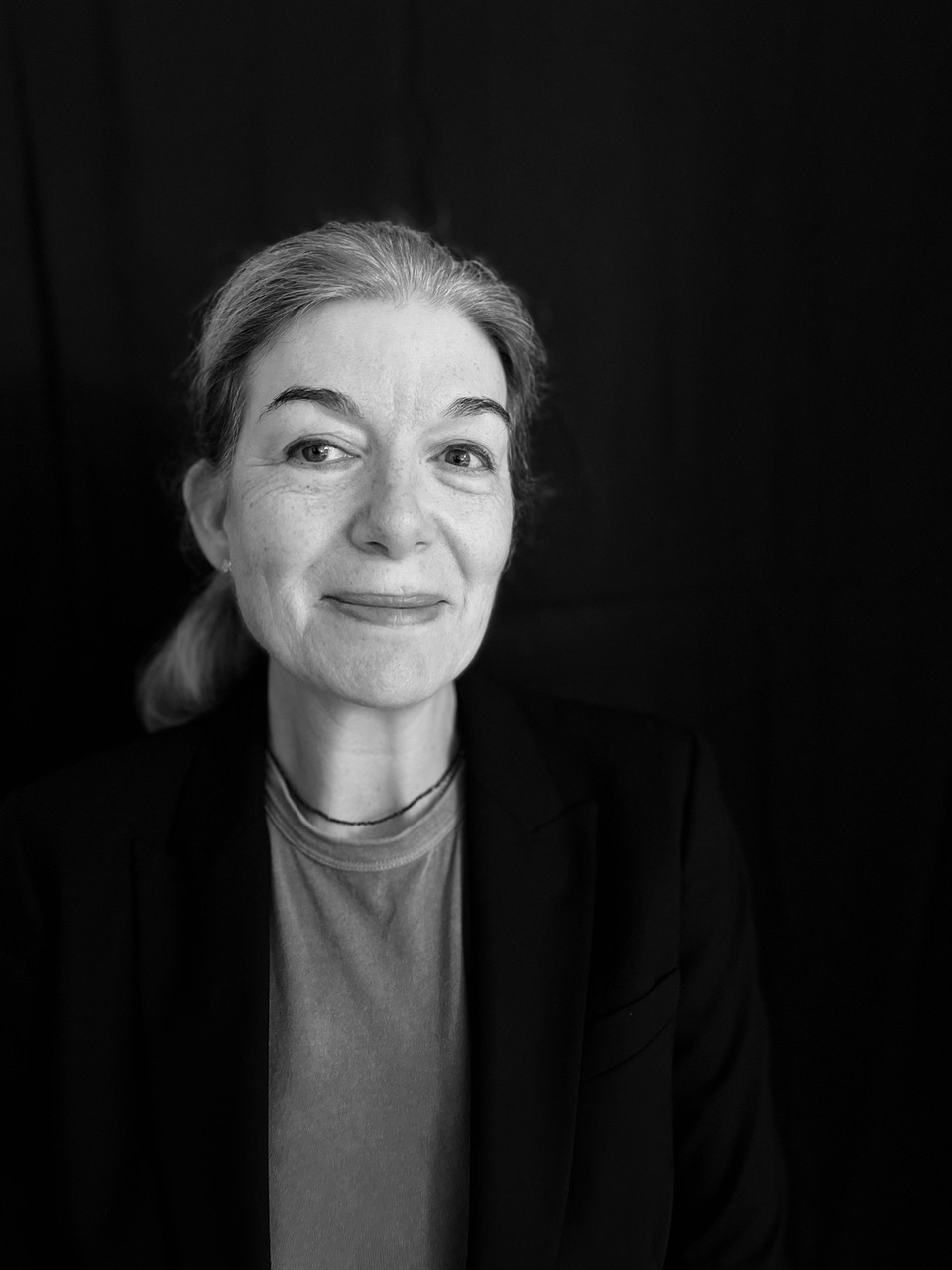 |
|
| Claire Messud (photo: Lucian Wood) |
|
Claire Messud is the author of nine books, including The Emperor's Children, The Woman Upstairs, and The Burning Girl. In 2020, she published the essay collection Kant's Little Prussian Head & Other Reasons Why I Write, which focused on her peripatetic upbringing as the daughter of a Canadian mother and a pied-noir father of Algerian descent. She returns to this material in This Strange Eventful History (reviewed in this issue), a sprawling multigenerational saga that follows a family like her own from 1940 to 2010.
What inspired you to return to your family's history in fiction, rather than essays?
There are several pieces in Kant's Little Prussian Head about my family, but in my mind they didn't begin to explore what that generation's lives were like. My second novel, The Last Life (1999), was in some ways my first approach to family material--it's not autobiographical, but it's about a family of French colonials, or pieds-noirs, after Algerian independence. We all write out of our experiences (even when writing fictions set on other planets or in other centuries), and the themes of life and of my family's history have been with me since I started out. It feels as though there's always more to discover; I'm not sure I have any conclusions, though.
Every chapter in the book is in third person except for those from the perspective of François and Barbara's younger daughter, Chloe. Why did you choose to present her chapters in this style?
The novel, in my mind, proceeds from a more traditional storytelling form in the earliest sections to an increasingly interior narrative, whether in third or first person. It seemed to me necessary that the first person should break into the novel about halfway through--it happens in the fourth decade of seven--so hopefully readers understand that while there are numerous subjectivities involved, one of them is more intimate, situated in a particular place in time and in a particular relation to the other characters.
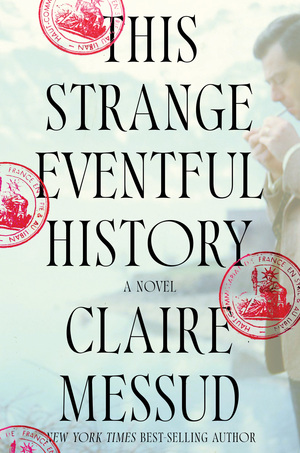 Could you talk about the link between family and world histories?
Could you talk about the link between family and world histories?
Yes, absolutely--the book is about the interconnectedness of our small personal lives and the big historical events always unfolding around us. The title comes from Jaques' famous soliloquy in As You Like It: "All the world's a stage, and all the men and women merely players...." As I considered my own family's history, I was aware that in the 20th century, everyone's life, however small and broadly insignificant, intersected repeatedly with History--wars and displacements, colonialism and decolonization, constant upheaval and migration. (This of course describes the 21st century equally well!) So I'm following a small group of people, a particular family, in their meanderings through the strange, eventful history of the 20th century--and yet one could focus on almost any person or people and bump up against the greater forces of the era. Our lives are shaped by these external forces--there's no escaping History.
Do you have thoughts you'd like to share regarding religion and its role in shaping strange, eventful histories?
Yes, some of the characters in the novel are devoutly religious--not just Denise but Gaston and Lucienne, whose devotion shapes everything in their lives--while others are committedly secular. Religion is for the grandparents' generation a great solace, a helpful structure. In wartime, in poverty, when they're separated, when they're lost--Gaston and Lucienne trust in God's plan. (I can't tell you how often God is invoked in my grandparents' correspondence.) This is a bulwark that the secular don't have, of course; the world looks very different without faith. But faith is also, as we know, itself responsible for many terrible things, for war and oppression and so on. My aim was simply to try to convey the very different experiences people have of the same events, depending on many factors, including one's attitude towards religion.
In the passage in which Mrs. Fisk makes derisive comments about Aborigines, Chloe and her sister, Loulou, tell her about the myth of the Rainbow Serpent, thought of as a god to Aboriginal Australians. Mrs. Fisk responds, "Aren't their myths fascinating? Who'd like a Life Saver?" Can you talk about the role of myth in histories, both those of a country and those that emerge within a family, and their possible intersection?
I wanted to convey, there, the indifference with which this older, white Canadian woman meets the stories of the native Australian peoples. Chloe, learning these myths at school at the same time as she learns Bible stories, grasps that there are differing foundational myths (the Rainbow Serpent and, say, Adam and Eve, or Jesus Christ) and to her, they're equally valid: she isn't quite able to differentiate between the traditions. Her grandmother, on the other hand, limited and formed by her particular education and beliefs, believes the Bible stories to be, if not literally true, then at least spiritually true, while she considers the myths she's not familiar with to be merely quaint stories.
We're all shaped by internalized beliefs of which we're not even aware--and some, of course, that we see more clearly, and call into question. Individuals and generations adopt different sets of myths--the American dream, for example, is one that sustained generations of Americans and determined a lot of people's life choices; but now, perhaps, people have lost faith in it. Indeed, broadly, culture is formed in myth, in beliefs the provenance and veracity of which are unclear--even as, as a character wisely observes in an Anthony Powell novel, "It's not what happens, it's what you think happens, that matters."
What are your thoughts on the role of cinema in shaping perceptions of other countries, other religions, and so on?
I know from reading family letters from the 1950s and 1960s that, while my Canadian grandparents acquired a TV in the late '50s, my French grandparents didn't have one. Instead, for entertainment they went every weekend to the movies, shows that started with the newsreels followed by one or two features. Cinema was a massive part of their lives; and of course, as I tried to convey in the novel, a lot of the movies they were seeing--in French North Africa, or in Argentina or later, when I was a kid in Australia--were Hollywood movies. The influence of American cinema through the 20th century and into the 21st is of course massive--that's a significant part of the cultural imperialism of which so many other nations have complained, and complain still. I think it's perhaps hard for Americans to understand how much power these narratives--these myths of America, if you will!--have had outside the USA over the past century.
The multigenerational family saga is one of the oldest and most enduring styles in literature. Do you have any favorite works from that genre, and did any previous family sagas influence you as you wrote this book?
There are so many multigenerational novels that I love--from Thomas Mann's Buddenbrooks or Tolstoy's War & Peace to Gabriel García Márquez's One Hundred Years of Solitude, Min Jin Lee's Pachinko or There, There by Tommy Orange--and many more. I believe we're as much unconsciously influenced by what we've read as we are consciously--so I'll claim influence from all of them! --Michael Magras
Book Candy
Book Candy
Medieval cats behaving badly: kitties that left paw prints... and peed... on 15th century manuscripts." (via Open Culture)
---
Merriam-Webster highlighted "10 Scrabble words without any vowels."
---
Illustrator Tom Gauld "on the ghost who refuses to leave the earthly realm." (via the Guardian)
Long Island
by Colm Toibin
Long Island--the latest novel from legendary author Colm Tóibín, and the sequel to his bestseller Brooklyn--opens with an irresistible shock, immediately pulling those who loved Brooklyn (and new readers) into the familiar but altered orbit of Eilis Lacey. The heroine's story continues in a book published 15 years after the first, and set a few decades after that novel's events, with Eilis headed back to her home country of Ireland.
Tóibín elegantly spritzes the events of Brooklyn throughout his sequel, establishing Eilis's emigration from Enniscorthy, Ireland, to Brooklyn, N.Y., in the 1950s, when she met and fell in love with a handsome young Italian, Tony Fiorello. Long Island leaps forward to the 1970s, when readers encounter Tony and Eilis together on a cul-de-sac in Lindenhurst, Long Island, where almost the entirety of the Fiorello family lives within yards of one another. Tony works as a plumber, and Eilis as a bookkeeper. The couple now have two children, teenagers Larry and Rosella, who admire their Italian heritage and are close with their Italian relatives. But they have no connection to their Irish family, and neither, indeed, does Eilis. She hasn't traveled home to Ireland since her sister's funeral decades ago, when she first met local boy Jim Farrell. Back then, she fell in love with him, too, only leaving him when her undisclosed marriage to Tony threatened to become public knowledge.
In Long Island, Eilis keeps thoughts and secrets to herself, even as her surrounding Italian relatives think "it strange for someone to spend her life so far away from her family." Tóibín writes, "In the evenings sometimes [Eilis] spoke about home over dinner.... But Tony and Rosella and Larry had no real interest in Enniscorthy, or even Ireland."
It is under these isolating circumstances that a stranger (intriguingly, an Irish one) arrives on Eilis's doorstep, and announces that his wife is having a baby--and that this baby's father is Tony. As such, the man plans to dump the infant on Eilis's doorstep as soon as it's born. Eilis digests this information with her signature cryptic resolve, which itself throws an almost comically contrasting light onto the impact of her actions. Eilis decides she, too, will have nothing to do with her husband's child, no matter his remorse. Here, Tóibín perfectly balances tone and intention, as Eilis tells Tony, "'There are no circumstances under which I am going to look after a baby. It is your business, not mine.'
'Maybe you don't want to be,' he said softly, 'but you are married to me.'
'It's a pity you didn't think of that when you were out fixing leaks.' "
This draws Eilis once more to Enniscorthy, where she hopes not only to escape the humiliating prospect of the infant on her doorstep but also to reconnect with the person she once believed herself to be. She has sacrificed her history to provide a fresh one for her children, and in realizing what she's given up--and how she has since been treated--she finally indulges in something like regret. But returning to Ireland presents its own dissonance when she once again encounters Jim Farrell, as yet unmarried. This time, it's Jim who chooses which realities to omit: he is quietly courting Eilis's former best friend, Nancy, and intends to marry her the coming spring. But neither Jim nor Nancy reveal this to Eilis until their agonizing love triangle comes to a head.
Nancy serves as a fascinating foil to Eilis. As the latter deals with the repercussions of her own inscrutability, Nancy forges a new future for herself, making concrete plans with (and sometimes without) Jim's input or endorsement. Both are women frustrated by their male-dominated surroundings, and so they make their moves carefully, but rarely do those moves work in their favor.
Long Island, like Brooklyn before it, works well as a standalone, even if it's now officially one half of a duology. It is a story of transformation, but equally of doubt--of what remains unsaid and undecided, and how it wreaks havoc on not only the characters' relationships but their identities. Jim wants to become a married man, but he isn't sure how to do it. Nancy wants a new, emboldened life away from her fish and chips shop, but she isn't entirely convinced Jim will follow. And Eilis herself is a cipher as a sort of self-fulfilling prophecy: she becomes what others see in her, whether an Irish outsider, a glamorous New Yorker, or a long-lost lover who's finally returned to set the world to rights. Long Island approaches these themes with Tóibín's deft eye for detail, creating a story that is altogether painful and maddening to witness--and yet impossible to turn away from. --Lauren Puckett-Pope
A Flash of Lightning
An Interview With Colm Tóibín
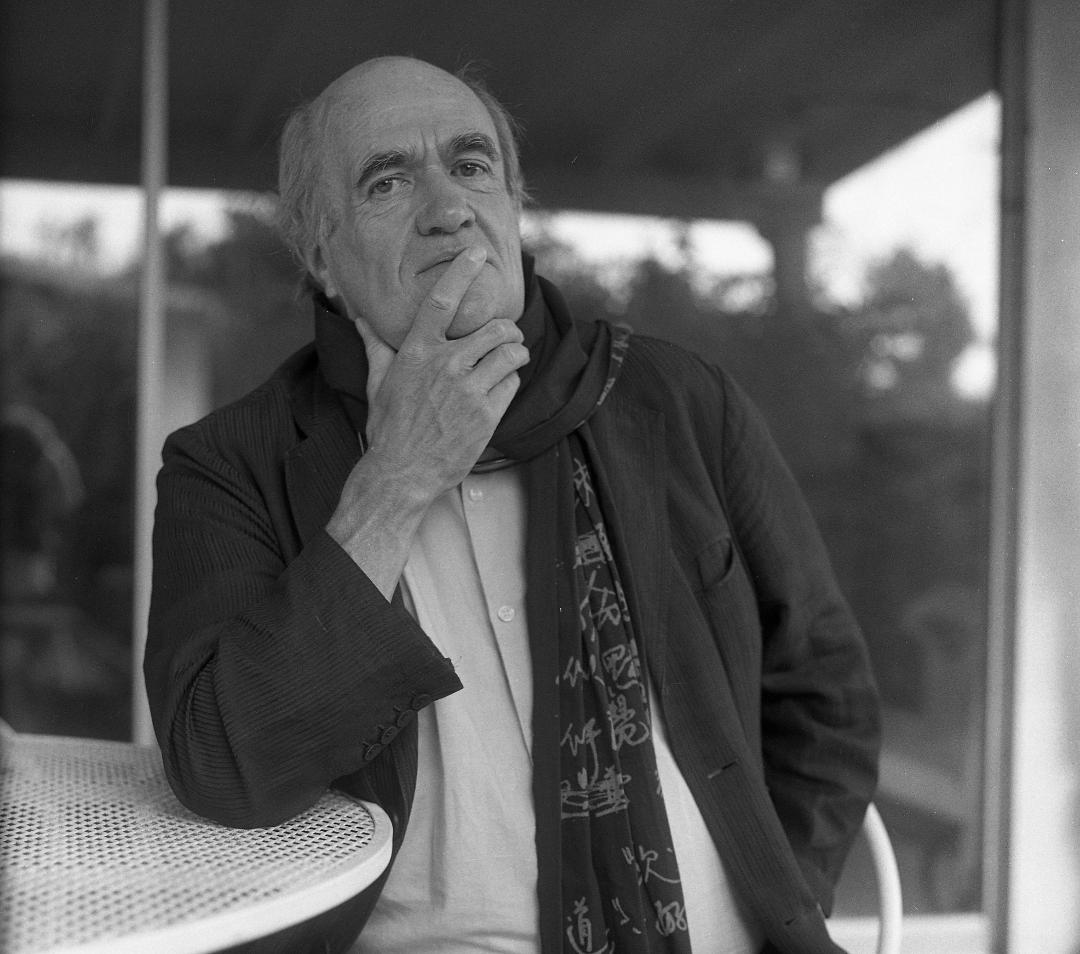 |
|
| (photo: Reynaldo Rivera) | |
Colm Tóibín, nominated three times for the Booker Prize (Blackwater Lightship; The Master; The Testament of Mary), is the author of 10 novels, as well as two story collections, and several books of criticism. He was named Laureate for Irish Fiction for 2022-2024 by the Arts Council of Ireland, and is a professor of humanities at Columbia University. He lives in Dublin and New York. Tóibín recently spoke with Shelf Awareness about Long Island (available from Scribner), which continues the story of some of his characters from Brooklyn, the influence of Henry James, his aversion to sequels, and what it's like to return to characters who've been "in my sights" for many years.
You've said that you decided to write Long Island because the right idea--with the right "drama"--struck you at the right time. What was it about this idea that convinced you it was the right time?
It was a simple thing and resembled a flash of lightning. One minute I was walking along the street thinking of nothing much. The next minute I had an idea for the opening of a novel. It struck me almost immediately that the strongest image would have to be at the very opening of the book. The scene that occurred to me had a sort of immediacy and sharp drama that I had never used at the opening of a book before. I thought it was time.
You've also previously expressed that you "hate sequels." Why is that?
A novel depends on the reader's imagination in a way that, say, film does not depend on so much. I write: "She came into the room." The reader has to imagine the room. I don't have to describe it. Nor do I have to describe the "she" each time. In film, you have to give a much more detailed visual sense of the "she" and the "room." You are writing for a reader; you are working out a set of clues and codes by which the reader can see a scene without having everything spelled out. This is the power of fiction, I suppose. If you provide too much information, you snarl the delicate connection between the page and the reader's mind. If you offer too little, then the reader does not have enough nourishment. I see reading as a form of action. The end of a novel is not its end; it is a place where the reader begins to imagine a set of aftermaths. A sequel messes with this delicate process. It says: I didn't tell you enough the last time; here's more. Who wants that?
Was it a challenge to return to these characters after a hiatus? Or did it feel like a homecoming of sorts?
Eilis's mother has changed, or so it seems. And I could work more intensely with the inner life of Jim since I had him on my books, as it were, or in my sights, for so many years. Eilis has become more confident in some ways. It was interesting to work with these three characters whom I have been imagining for years. Also, Nancy in the novel also appears in a long short story, written in the summer of 2001, "The Name of the Game." So, she has been with me for a long time.
The Eilis of Long Island is different from the Eilis of Brooklyn, in no small part because she's decades older. How did you approach a character you knew so well and turn her into someone older, more mature--but still recognizable both to yourself and to readers?
She still keeps a great deal to herself. She is not assertive, but has managed now to control her circumstances more. She is not really social, nor is she introspective. Motherhood has changed her. She puts an enormous amount of care into her children. This is the big change.
Similarly, how did you go about making Eilis's Long Island and Ireland recognizable, both through her eyes and through the broader lens of the '70s?
Mostly, by leaving out public events, events that would not naturally be part of the drama of her life. She refers to Vietnam and to Nixon, but they are small part of a larger picture that is mainly intimate and domestic. She reads the New York Times on Sundays, and this is a very big change in her life. In Ireland, there is one reference to bombs in Dublin. It is there for the reader to notice. And there are a few references to Northern Ireland and the Troubles.
Brooklyn is one of your most beloved stories. Did you, at any point, worry that returning to this story might disrupt or otherwise frustrate the ending you'd already written, the one that fans so appreciated?
Long Island happens 25 years after Brooklyn. The events in Brooklyn are referred to, but there is a new story now, and I make clear in the first three pages that we are in new territory. So I didn't worry about doing damage to the earlier book.
At the beginning of this book, Eilis has a beautiful life--but it's an isolated one, particularly from her Irish roots. Why was that an essential precedent to set for Eilis's journey in Long Island?
Yes, she married Tony and moved into his world. She never developed friendships of her own in America. This made her isolated. I think this happened to anyone who married in another country. For the purposes of the novel, this made a difference. Eilis is alone--no sisters or close pals, no old workmates. This isolation provides for a kind of drama where she is not part of the same society to which her children belong. It means I can work with her interior life with more intensity.
What books did you read while working on Long Island? Do you choose your reading materials based on what you're writing at the moment?
At Columbia University, I was teaching a course on Henry James, on those novels of secrecy and treachery: The Portrait of a Lady, The Ambassadors, The Wings of a Dove, The Golden Bowl. I am sure that some of that atmosphere, with focus closing in on very few characters who are outside their own country, made its way into the novel.
Your work as an author and thinker far exceeds the task of writing novels. Given the intensity of demand for your talents, how do you choose which jobs to take on, which to leave behind, and when to make time for your own writing?
I do things that interest me. I make time. It's really not a problem. Or maybe I have a way of pretending that it's not! --Lauren Puckett-Pope
Rediscover
Rediscover: Robert MacNeil
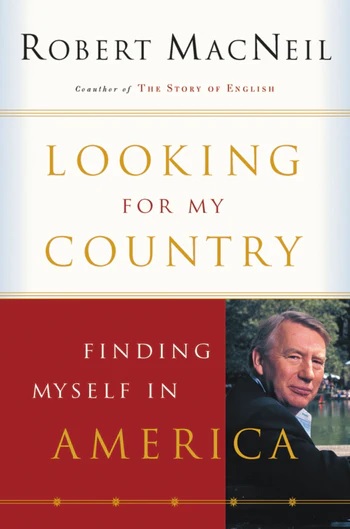 Robert MacNeil, the Canadian-born journalist and author "who delivered sober evening newscasts for more than two decades on PBS" as co-anchor with Jim Lehrer (who died in 2020) of The MacNeil/Lehrer Report, later expanded as The MacNeil/Lehrer NewsHour, died April 12 at age 93, the New York Times reported.
Robert MacNeil, the Canadian-born journalist and author "who delivered sober evening newscasts for more than two decades on PBS" as co-anchor with Jim Lehrer (who died in 2020) of The MacNeil/Lehrer Report, later expanded as The MacNeil/Lehrer NewsHour, died April 12 at age 93, the New York Times reported.
MacNeil attended Dalhousie University in Halifax, Nova Scotia, where a Canadian Broadcasting Corp. producer saw him in a school production of Othello and hired him to act in CBC radio productions and eventually a daily radio soap opera. MacNeil dropped out of college to pursue stage acting full time, but decided that he was better suited to be a playwright. He returned to school at Carleton University in Ottawa, while working as a national radio announcer for the CBC and then for the CBC's new television service, where he also hosted a children's program. After graduating, he moved to England to write plays, but quickly turned to journalism to make money.
MacNeil spent time at NBC News early in his career before joining the fledgling Public Broadcasting Service in 1971. "He brought with him a news sensibility honed at the BBC, where he had worked in the interim, and became a key figure in shaping U.S. public television's in-depth and evenhanded approach to news coverage," the Times wrote, adding that "a pairing with Lehrer in 1973 to cover the Senate Watergate hearings for PBS was unpopular with the operators of many local public stations, who thought the prime-time broadcasts weren't appropriate evening fare. But the two men's serious demeanor was a hit with viewers, and the broadcasts won an Emmy Award and eventually launched an enduring collaboration."
MacNeil became an American citizen in 1997 and was made an officer in the Order of Canada the same year. He reflected on his life as a dual citizen in a 2003 memoir, Looking for My Country: Finding Myself in America. His other books include The People Machine (1968), The Right Place at the Right Time (1982), and four novels--Burden of Desire (1992), The Voyage (1995), Breaking News (1998), and Portrait of Julia (2013).
He was a co-author, with Robert McCrum, of The Story of English, a companion volume to the 1986 BBC-PBS television series he hosted; and he wrote its 2005 sequel, Do You Speak American?
He also chaired the board of the MacDowell Colony (now known as MacDowell), the retreat for artists, writers, and musicians in Peterborough, N.H., from 1993 to 2010. During MacDowell's centennial celebration in 2007, MacNeil told Jeffrey Brown: "The real importance of art is that it is the greatest expression of the American ideal of freedom. Artists are intellectually and creatively freer than anybody."
Looking for My Country: Finding Myself in America and Do You Speak American? are available from Harper Paperbacks.
| Advertisement Meet belle bear! |


